Tomato Carbon, features of the variety and secrets of its cultivation
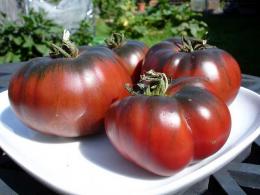
Tomatoes have long been closely intertwined with folk culture around the world. And they are not only tasty, juicy, one of the most popular types of vegetables, but also the heroes of sayings, fiction and the reason for new scientific discoveries and inventions.
Content:
- Description of tomato as a crop
- Brief characteristics and description of the tomato variety Carbon
- Planting and care
- Harvesting
- Pest and disease control
- Reviews of tomato Carbon
Description of tomato as a crop
Tomato is a perennial and annual vegetable crop from the nightshade family. It has an erect stem with numerous branches and deep ribbing. The height of the bush depends on the variety and can be 35-200 cm. The fruits of tomatoes are berries, and they are often called tomatoes, fleshy, of different colors and tastes, inside they contain chambers with numerous seeds.
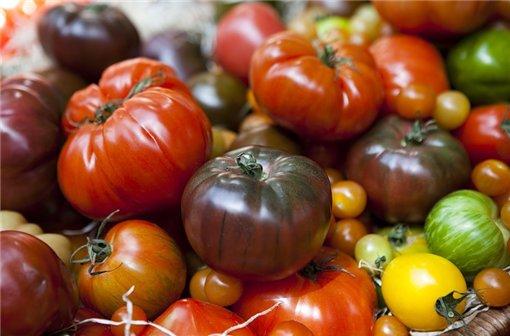
A culture appeared around 800-200 BC. e. in South America, and now a large number of varieties have been developed and hybrids. The plant is grown everywhere in many parts of the world in open and closed ground conditions, and even in apartments and on balconies.
Tomatoes contain many useful substances and vitamins:
- Cellulose.
- Acids.
- Carotene.
- Mineral salts.
- Vitamins of the BB, P, C, K groups.
- Iron.
- Iodine.
- Calcium.
- Chlorine.
- Phosphorus.
Brief characteristics and description of the tomato variety Carbon
The variety belongs to the mid-season, medium-growing and identerminant plants.Suitable for growing in open ground and planting in greenhouses. The bush grows powerful, up to 150 cm, so it must be tied to a support.
Formation into 2 stems and mandatory pinching gives the greatest efficiency in obtaining a harvest. The tomatoes are round, when physically ripe they have a chocolate color with a cherry tint, they are large, the average weight of one fruit is 250-300 grams, fleshy, sweet and spicy in taste.
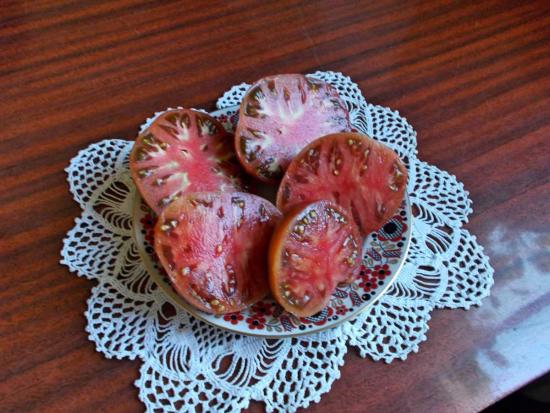
They are more suitable for fresh consumption, preparing various dishes and making juices, but are not suitable for canning, as they are very large and contain too much liquid.
Planting and care
Growing will require vegetable growers to comply with a combination of the following actions.
Choosing a favorable landing site and preparing it
The plant loves well-lit areas, slightly acidic soil or neutral acidity, it should be well drained, nutritious and light. Therefore, before planting, take care of the timely application of rotted organic fertilizers and spill with a weak solution of potassium permanganate for disinfection.
Proper watering
Watering Frequent but not too much is required. The top layer of soil must dry out before the next watering. Lack of moisture leads to wilting and drying out of the bush, and excess moisture leads to the appearance of fungus, various diseases and pests on the plant.
Loosening and weeding
Loosening provides access to the necessary oxygen to the root system. It is necessary to regularly loosen the soil around the trunk and remove weeds in a timely manner.
Fertilizer application
Before planting, organic matter is added. fertilizers, and the first feeding should be special potassium preparations.
After 25-30 days, foliar feeding is done by spraying on a cloudy day. If necessary, feeding at the root is repeated one more time during the season.
Trimming and forming 2-3 stems
Tying ensures the safety of the plant, and this process begins when the bush reaches 35-40 cm. For tying, you will need a soft rope, two stakes 1 meter high and higher, they are located opposite.

They tie up the bushes, making sure that the shoots and the central trunk rest on the ropes and do not interfere with each other, and that the ropes themselves do not fit tightly to the trunk and branches; a gap must be left.
Harvesting
Carry out regularly, every 3-5 days. If this is not done, ripe tomatoes begin to suffer from fungal diseases and can infect still green ones. Full ripeness tomatoes reach when they acquire a cherry-chocolate color and become 150-200 grams in size.
Pest and disease control
Pests and diseases that occur on this variety do not differ from ordinary ones; these can be: fungal diseases, late blight, cracking of fruits, phomosis, aphids, spider mites.
Fomoz - looks like brown spots of rot pressed into the fruit. The disease is provoked by high humidity and excessive nitrogen content in the soil. Damaged fruits are all destroyed, and the bushes themselves are treated with special means.
Prevention of late blight is the correct proximity (cannot be planted next to potatoes), crop rotation is observed, fertilizers are applied in a timely manner, and the plants are regularly sprayed with anti-disease products.
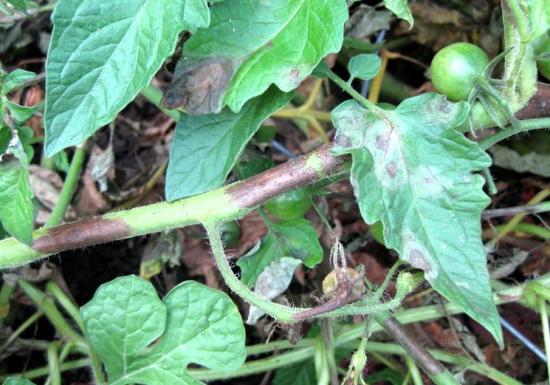
Cracking of fruits occurs if the watering regime is irregular: either too rare or excessive.Unripe tomatoes are especially susceptible to cracking, and infection can get into the cracks and rotting can begin.
Both various folk remedies and specialized preparations that can be purchased at a flower or hardware store help against aphids.
The spider mite is a small red spider that envelops plants in its web and drinks juice from the leaves and stems. They cope with it using folk remedies and spraying Karbofos.
Carbon Reviews
Having studied the reviews on numerous forums, you can see that there are many more positive characteristics than negative ones.
Tomatoes Carbon is loved by summer residents for its taste, large fruits, productivity and unpretentiousness of cultivation. Among the shortcomings, the unevenness and tuberosity of the fruit are often noted.
The Carbon variety, tested by vegetable growers and quite early ripening, gives an excellent harvest and pleases with its taste. The juicy, fleshy fruits are great for fresh consumption and making tomato juice, and even an inexperienced grower can handle the care and cultivation.
And those summer residents who tried to grow the plant on their own even classify Carbon as a collection variety tomatoes.
More information about the Carbon variety - in the video:

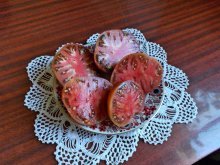
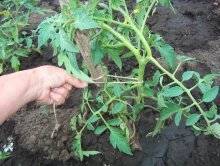
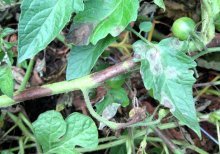
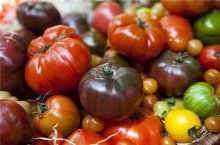
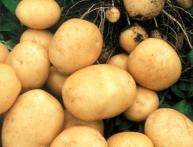

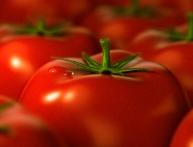
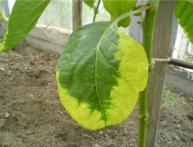
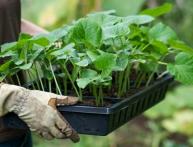
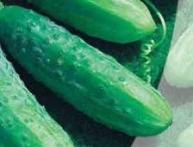
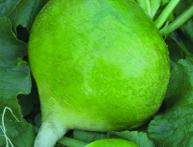
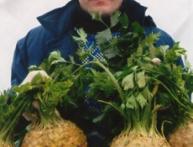
Comments
All tomatoes, including Carbon, need to be watered 2 times a week so that the bush’s root system develops. It is better to spray against diseases not with chemicals, but with biological ones, for example, Fitosporin, every 10 days.
I can’t say that this variety is particularly unpretentious, and its yield is far from record-breaking.Although the fruits can be grown unusually large, they look very original on the table or in a salad. Regarding the taste, I can say that there are probably lovers of this particular variety, but I don’t consider myself one of them. For me, after all, tomatoes are sources of iron, and therefore they should be red.